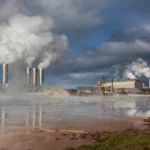Discover 10 Diverse Uses of Renewable Energy and unlock the potential for a greener future. From reducing costs to improving public health, creating jobs, and preserving biodiversity, renewable energy offers a multitude of benefits. Join us as we delve into the incredible advancements in solar, wind, geothermal, hydroelectric power, and more. Explore how these sustainable energy sources are revolutionizing industries and paving the way towards a sustainable and environmentally-friendly world.
Key Takeaways:
- Solar energy is a versatile renewable energy source that can be used for heat generation and collected through solar panels.
- Water can be used to generate electricity through hydroelectric power plants.
- Wind energy can be harnessed by windmills and turbines to produce electricity.
- Renewable energy sources offer significant benefits, including reducing global warming and improving public health by reducing pollution.
- Renewable energy provides stable energy prices and contributes to job creation and economic benefits compared to fossil fuel technologies.
- Renewable energy sources, such as wind, sun, plant matter, and heat from the Earth, are inexhaustible.
- Renewable energy comes from sources that will not be depleted within our lifetimes.
- Renewable energy systems are becoming more efficient and cost-effective, contributing to their increasing share of global energy consumption.
- Hydropower, solar energy, wind energy, biofuels, and geothermal power are different types of renewable energy sources.
- The utilization of renewable energy sources promotes sustainability and the transition to a greener future.
10 Uses of Renewable Energy

Renewable energy has gained significant attention in recent years due to its numerous benefits for the environment, economy, and society as a whole. From reducing carbon emissions to improving public health, renewable energy sources have proven to be a crucial component of a sustainable future. In this article, we will explore 10 diverse uses of renewable energy and delve into the remarkable ways in which it is transforming various sectors.
1. Electricity Generation
One of the most prominent uses of renewable energy is in electricity generation. Solar power plays a significant role in this domain, with solar panels harnessing the sun’s energy and converting it into electricity. Similarly, wind turbines capture the power of the wind to generate clean, sustainable electricity. This shift towards renewable sources of electricity helps reduce greenhouse gas emissions and dependence on fossil fuels.
2. Heat Generation
Renewable energy sources, particularly solar energy, can be harnessed for heat generation. Solar panels collect the sun’s rays and convert them into heat, which can be used for various purposes. Whether it’s heating water for residential or commercial use or providing warmth for industrial processes, solar energy offers a versatile solution for heat requirements.
3. Transportation
The transportation sector is a significant contributor to greenhouse gas emissions. However, renewable energy is revolutionizing this domain by offering viable alternatives to fossil fuel-powered vehicles. Electric vehicles (EVs) powered by electricity generated from renewable sources are becoming increasingly popular worldwide. Additionally, renewable biofuels derived from organic matter are being used as sustainable alternatives to conventional transportation fuels.
4. Heating and Cooling Systems
Renewable energy sources are also being extensively utilized in heating and cooling systems for buildings. Geothermal energy, for instance, harnesses the heat from the Earth’s core to provide heating and cooling solutions. This not only reduces carbon emissions but also offers significant cost savings over time.
5. Agriculture and Farming
Renewable energy plays a crucial role in sustainable agriculture and farming practices. Solar-powered irrigation systems are being increasingly adopted to ensure efficient water usage on farms. Wind energy is also utilized for pumping water and powering machinery in remote agricultural areas. By relying on renewable energy, farmers can reduce their reliance on fossil fuels, lower operating costs, and contribute to a cleaner environment.
6. Water and Wastewater Treatment
The water and wastewater treatment sector requires substantial energy inputs. Renewable energy sources, such as solar and wind power, can provide a sustainable and cost-effective solution for powering these facilities. By integrating renewable energy into the treatment processes, these systems can significantly reduce their carbon footprint and operational costs.
7. Rural Electrification
Renewable energy sources have a tremendous impact on rural communities that lack access to electricity. Microgrids powered by solar, wind, or hydroelectric energy enable electricity access in remote areas, improving the quality of life and fostering economic development. These decentralized systems not only provide reliable electricity but also eliminate the need for expensive and polluting diesel generators.
8. Industrial Processes
Renewable energy is increasingly being integrated into industrial processes, helping reduce greenhouse gas emissions and dependence on fossil fuels. Industries are utilizing renewable energy sources for power-intensive operations, such as manufacturing, processing, and cooling. This shift towards cleaner energy sources not only benefits the environment but also improves the sustainability and competitiveness of industries.
9. Emergency Power Supply
Renewable energy sources, especially solar power, are proving to be reliable emergency power supplies in disaster-prone areas. Solar panels can provide electricity during power outages, ensuring critical services and communication remain functional. Battery storage systems combined with renewable energy also enable uninterrupted power supply during emergencies.
10. Grid Flexibility and Energy Storage
Renewable energy sources offer a unique advantage in improving grid flexibility and energy storage. With the integration of advanced technologies, such as smart grids and battery storage systems, excess energy generated from renewable sources can be stored and utilized during peak demand periods. This helps balance the electricity grid and reduces the need for traditional fossil fuel power plants.
In conclusion, renewable energy offers a vast array of applications across various sectors, transforming the way we generate power, heat our homes, fuel our transportation, and support industrial processes. With their infinite potentials and numerous benefits, renewable energy sources are paving the way for a sustainable and greener future. Embracing these diverse uses of renewable energy is not only environmentally responsible but also economically advantageous, creating a resilient and thriving society for generations to come.
In our daily life, we can find numerous applications for solar energy. From powering our homes to charging our devices, solar energy has become an indispensable part of our lives. Check out these 10 uses of solar energy in our daily life and discover the endless possibilities that this renewable source of energy brings. [10 uses of solar energy in our daily life]
Solar panels have revolutionized the way we harness renewable energy. They have become a popular choice for various applications, from generating electricity in residential areas to providing energy for outdoor lighting. Explore the diverse applications of solar panels and their benefits in these 10 uses of solar panel. [10 uses of solar panel]
Renewable Energy Creates Jobs

Renewable energy is not only an effective solution for combatting climate change and reducing our dependence on fossil fuels, but it also has the power to stimulate job growth and drive sustainable economic development. As the world seeks to transition to a greener and more sustainable future, the renewable energy sector is proving to be a significant source of employment opportunities. Let’s explore 10 diverse uses of renewable energy and how they contribute to job creation.
1. Solar Photovoltaic (PV) Installation and Maintenance
Solar energy is one of the fastest-growing sources of renewable energy and has created a substantial number of jobs worldwide. From designing and installing solar panels to maintaining and repairing solar PV systems, there is a range of roles available in the solar energy sector. These jobs not only require specialized skills but also provide opportunities for employment at various levels of expertise.
2. Wind Turbine Manufacturing and Operation
Wind power is another prominent player in the renewable energy field, with wind turbines harnessing the power of the wind to generate electricity. The manufacturing, installation, and operation of wind turbines require a skilled workforce, resulting in job opportunities in manufacturing plants, construction companies, and wind farm operations. From turbine technicians and engineers to project managers, the wind energy sector offers a diverse range of employment prospects.
3. Hydropower Generation and Maintenance
Hydropower, derived from the energy of flowing or falling water, has long been a reliable source of renewable energy. The development and maintenance of hydroelectric power plants require a skilled workforce, including hydraulic engineers, operators, and electrical technicians. Additionally, the construction and maintenance of dams and associated infrastructure also contribute to job creation in the hydropower sector.
4. Biomass Energy Production and Management
Biomass energy, derived from organic materials such as plants and animal waste, offers a versatile and sustainable energy source. The production and management of biomass energy involve activities like harvesting, processing, and converting biomass into heat, electricity, or biofuels. These processes create jobs in agriculture, forestry, engineering, and the manufacturing of biomass equipment.
5. Geothermal Heat and Power Generation
Geothermal energy utilizes the heat from the Earth’s interior to generate electricity or provide heating and cooling systems. The development and operation of geothermal power plants require a skilled workforce, from geologists and drilling experts to power plant operators and maintenance technicians. Geothermal energy projects not only provide direct employment opportunities but also support the growth of related industries, such as drilling and manufacturing.
6. Energy Efficiency and Building Retrofitting
Improving energy efficiency in buildings is a crucial aspect of the renewable energy transition. Retrofitting existing buildings to be more energy-efficient and constructing new sustainable buildings create jobs across various sectors. From architects and energy auditors to insulation installers and HVAC technicians, the demand for skilled professionals in the energy efficiency sector is on the rise.
7. Electric Vehicle (EV) Manufacturing and Infrastructure
As the world embraces the shift towards electric mobility, the manufacturing of electric vehicles (EVs) and the development of charging infrastructure are contributing to job creation. EV manufacturing requires a diverse range of skills, including engineering, battery technology, and assembly line production. Additionally, the installation and maintenance of EV charging stations offer employment opportunities for electricians and technicians.
8. Smart Grid and Energy Storage
The integration of renewable energy sources into the electrical grid and the advancement of energy storage technologies are essential for maximizing the benefits of renewable energy. The development and maintenance of smart grids and energy storage systems involve a range of job roles, including electrical engineers, grid operators, and technicians specializing in energy storage technologies.
9. Research and Development in Renewable Energy
Advancements in renewable energy technologies rely on extensive research and development efforts. These endeavors create employment opportunities for scientists, engineers, and researchers who are dedicated to pushing the boundaries of renewable energy innovation. Their work is crucial in improving the efficiency, affordability, and scalability of renewable energy solutions.
10. Education and Training in Renewable Energy
With the rapid growth of the renewable energy sector, the demand for skilled professionals is increasing. Educational institutions and training centers play a vital role in providing the necessary knowledge and skills for individuals to pursue careers in renewable energy. Teaching, training, and certification programs in renewable energy fields offer employment opportunities for educators and trainers while ensuring a competent workforce for the sector’s future.
Key Takeaways:
- Renewable energy sources, such as solar, wind, hydro, biomass, geothermal, and energy efficiency, create job opportunities in various sectors.
- Solar photovoltaic (PV) installation and maintenance, wind turbine manufacturing and operation, and hydropower generation and maintenance are key contributors to job creation in the renewable energy sector.
- Biomass energy production and management, geothermal heat and power generation, and energy efficiency and building retrofitting also offer employment opportunities.
- Electric vehicle (EV) manufacturing, EV charging infrastructure development, smart grid implementation, energy storage technologies, research and development, and education and training are additional areas that contribute to job growth in renewable energy.
- Investing in renewable energy not only helps combat climate change but also drives sustainable economic development and job creation.
#3. Renewable Energy Affects Biodiversity
Renewable energy has emerged as a pivotal solution to combat climate change and reduce our reliance on fossil fuels. However, it is crucial to understand that the rapid expansion of renewable energy projects can have significant impacts on biodiversity across its lifecycle. Let’s delve into the various ways in which renewable energy affects biodiversity, and explore the challenges and opportunities associated with these impacts.
The Impacts of Renewable Energy on Biodiversity
Renewable energy projects, such as solar and wind farms, can have both positive and negative consequences for biodiversity. While they contribute to mitigating climate change, the development and operation of these projects can disrupt ecosystems and wildlife habitats.
1. Habitat Loss and Fragmentation: The construction of renewable energy infrastructure often requires clearing large areas of land or modifying existing landscapes. This can result in habitat loss and fragmentation, affecting various species that rely on these areas for food, shelter, and breeding.
2. Collision and Disorientation: The presence of renewable energy infrastructure, particularly wind turbines, can lead to bird and bat collisions. These species may also become disoriented by the rotating turbine blades or be deterred from their migratory pathways, impacting their populations and ecological balance.
3. Noise and Light Disturbance: Renewable energy projects can generate noise and light disturbances, which can disrupt the behavior, breeding patterns, and feeding habits of wildlife in the vicinity. This disturbance can have cascading effects on entire ecosystems.
4. Water Resource Utilization: Hydropower projects, while producing clean energy, can alter river flows and affect aquatic ecosystems. Changes in water availability and quality can impact fish populations and other aquatic species.
Balancing Renewable Energy Development with Biodiversity Conservation
To address the biodiversity impacts associated with renewable energy development, there is a pressing need to implement mitigation strategies and adopt sustainable practices. Here are some key considerations and potential solutions:
1. Strategic Site Selection: Identifying suitable sites for renewable energy projects is crucial to minimize their impacts on biodiversity. Conducting thorough environmental impact assessments and involving stakeholders in decision-making processes can help identify ecologically sensitive areas that should be avoided.
2. Conservation and Restoration: Implementing biodiversity conservation measures, such as setting aside protected areas, restoring degraded habitats, and creating wildlife corridors, can help mitigate the negative effects of renewable energy projects. These measures can provide alternative habitats for displaced species and promote ecological connectivity.
3. Technology Innovation: Continued research and development in renewable energy technology can lead to innovative designs and mitigation measures that reduce wildlife and habitat disturbances. For example, bird-friendly designs for wind turbines and solar panel installations that allow light penetration and preserve groundcover can be implemented.
4. Monitoring and Adaptive Management: Rigorous monitoring of renewable energy projects and their impacts on biodiversity is essential to identify potential risks and adapt project operations accordingly. Early detection of adverse effects can facilitate timely intervention and the implementation of corrective measures.
Key Takeaways:
- Renewable energy development can have significant impacts on biodiversity, including habitat loss, fragmentation, and disturbance.
- Wind turbines and solar farms may cause bird and bat collisions, disorientation, and noise/light disturbances.
- Hydropower projects can alter water availability and quality, affecting aquatic ecosystems.
- Balancing renewable energy development with biodiversity conservation requires strategic site selection, conservation measures, technology innovation, and monitoring for adaptive management.
Citation:
– Resilience.org
– ScienceDaily
FAQ
Q1: What are some examples of renewable energy sources that can improve public health?
A1: Renewable energy sources, such as solar energy and wind energy, can help improve public health by reducing air and water pollution, which are major contributors to respiratory and cardiovascular diseases.
Q2: How does renewable energy affect biodiversity?
A2: The development and operation of renewable energy projects can have impacts on biodiversity across their lifecycle. It is important to consider location and implement mitigation strategies to address potential threats to biodiversity associated with solar and wind energy.
Q3: How does the use of renewable energy create jobs?
A3: The transition to renewable energy creates a green jobs market, with various sectors experiencing job growth. Solar photovoltaic (PV) has provided the largest number of renewable energy jobs, followed by hydropower, biofuels, and wind power. Investing in clean energy can stimulate sustainable economic development and help create more employment opportunities.
Q4: How does the cost of renewable energy change over time?
A4: Over time, the cost of renewable energy has been decreasing. Renewable energy systems are becoming more efficient and cheaper, resulting in a more cost-effective option compared to fossil fuel technologies. This cost reduction makes renewable energy more accessible and attractive for adoption.
Q5: What are some diverse uses of renewable energy?
A5: Renewable energy has diverse applications. Some examples include using solar energy for heat generation through solar panels, harnessing the power of water through hydroelectric power plants, and utilizing wind energy through windmills connected to turbines for electricity generation. These different sources of renewable energy play a crucial role in mitigating climate change and reducing reliance on fossil fuels.












